Monday, July 28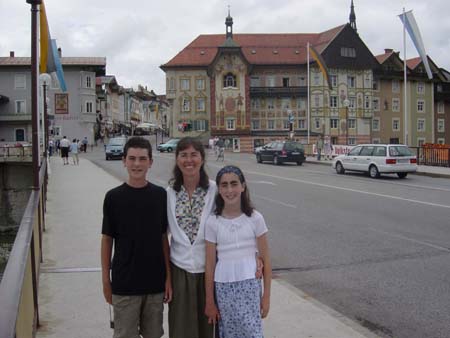
Paula: Today was a scheduled "down day," meaning
we spend time just having fun and relaxing. We spent several hours both in
the morning and the evening enjoying the water-park and spa at our hotel.
"Bad" means spa in German as we learned from a visit with Marieluise
Wittreich, a Bad Tolz resident and Servas host who we meet with this afternoon.
The town (which celebrated its 100th anniversary yesterday) has been a place
where people have come for therapeutic treatments or "cures" for
many years. The sulfur 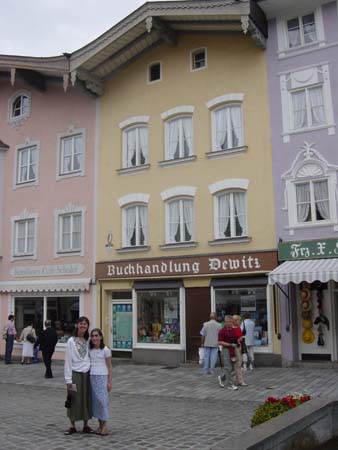 springs
feed the healing pools and have attracted people to Bad Tolz. Unfortunately,
we learned from Marieluise that changes in health insurance coverage over
the past few years have made it more difficult for people to afford the treatments
offered here and many of the spas are struggling. We also learned that "Tolz"
refers to a castle that was once in this area-thus "Bad Tolz."
springs
feed the healing pools and have attracted people to Bad Tolz. Unfortunately,
we learned from Marieluise that changes in health insurance coverage over
the past few years have made it more difficult for people to afford the treatments
offered here and many of the spas are struggling. We also learned that "Tolz"
refers to a castle that was once in this area-thus "Bad Tolz."
The water-park and spa were fun and relaxing. There were waterslides, a wave
pool, sauna and many different therapeutic pools at varying temperatures with
whirlpool and salts. The facility was impeccably clean.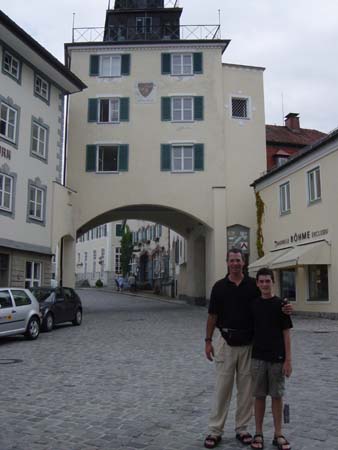
In the afternoon we walked though the town and explored the many shops. There were cafes, bakeries, butchers and clothing shops. Most of the clothing stores had displays of traditional German outfits. Marieluise told us later that some Germans still wear traditional clothing, especially the men and boys who wear lederhosen (leather shorts with suspenders). The town is quite pretty with its main street rising up a hill from a river that runs through the town. There are several churches with the classic "onion shaped" green steeples as well as a watering hole or fountain. We enjoyed suppen (soup) in one of the sidewalk cafes.
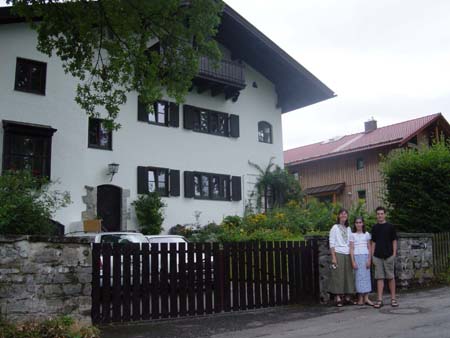 After
walking through the town center, we made our way to 6 Alleestrassa. This is
where my father had lived as a young boy for several years just after World
War II. I had visited Bad Tolz with my father and we had found this home several
years ago. I recognized it immediately and the small pond beside it. It was
up a fairly steep hill and I recalled my father telling me that in the winter
they would ride sleds all the way to the town center. The kids enjoyed playing
in the pond, feeding the ducks and finding worms for the fish. I envisioned
that perhaps my father and his brother and sister had once done the same thing
on this pond almost 60 years ago.
After
walking through the town center, we made our way to 6 Alleestrassa. This is
where my father had lived as a young boy for several years just after World
War II. I had visited Bad Tolz with my father and we had found this home several
years ago. I recognized it immediately and the small pond beside it. It was
up a fairly steep hill and I recalled my father telling me that in the winter
they would ride sleds all the way to the town center. The kids enjoyed playing
in the pond, feeding the ducks and finding worms for the fish. I envisioned
that perhaps my father and his brother and sister had once done the same thing
on this pond almost 60 years ago.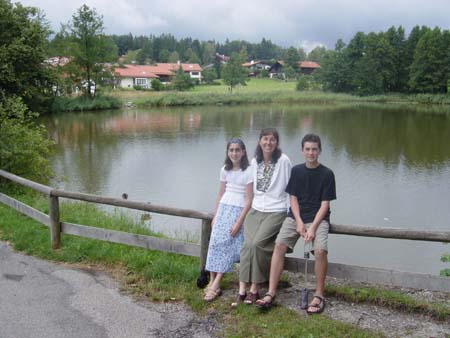
We then enjoyed a wonderful visit with Marieluise. She is an artist who was
born in Bad Tolz and has lived here most of her life. Her excellent command
of English allowed us to enjoy a lively conversation for several hours in
her home and garden. We had an opportunity to learn more about Bad Tolz and
Germany, while sharing and enjoying her wonderful hospitality. 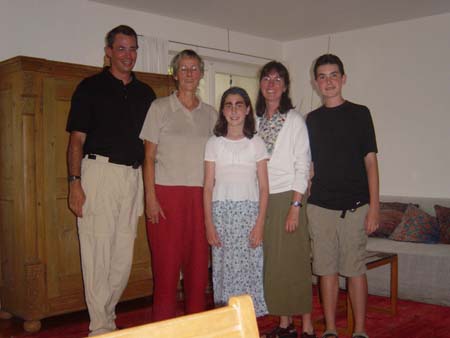
On the way back to our hotel, I had a fun encounter at a dry cleaner. We have been searching for a laundromat and been told that there were none in Bad Tolz-only in Munich. Fortunately, someone on the street offered to help me with translation. Between their understanding of English and my body language, I was able to negotiate having our laundry done by the dry cleaner for a good price-thus avoiding several hours washing by hand in our hotel bathtub.
A late dinner found us in an Italian restaurant where the chef and waitress spoke just a little English but went out of their way to make us feel welcome. We had a wonderful meal and lively conversation with the chef who was originally from Sicily but loves living in Germany (he made it clear, however that Sicily was "paradise.")
As we finish our stay in Bad Tolz, we find ourselves refreshed not only from
our day of relaxation but also by the kindness of the people we have met here.
I am especially pleased to have visited here again and share with David and
Katie a place special to my father.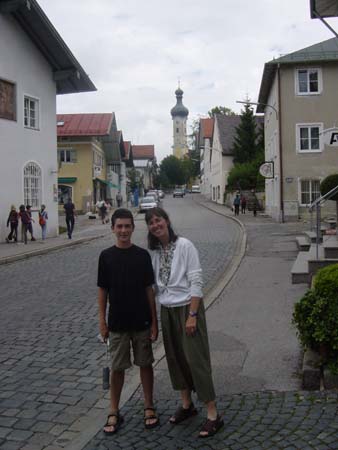
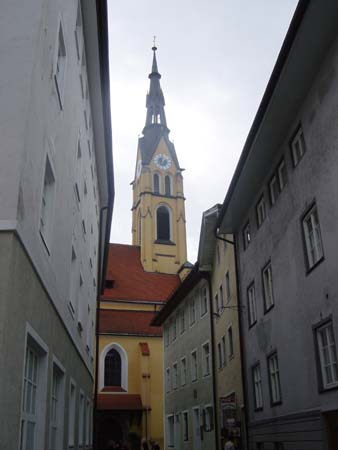
Distance Walked: 2.44 miles
After reflecting on our time spent at Dachau yesterday, David had these thoughts to offer:
David: Dachau was a concentration camp located just north of Munich,
in Germany. It was originally built in 1933, and was in use until 1945. It
was one of the first concentration camps made, and was used as a model for
future camps by the Nazis. The SS (Hitler's special police) wrote the first
guidelines for how prisoners were to be treated, tortured, and punished. This
particular camp was a "work camp", which meant that the prisoners
were forced to work. They were told that if they worked hard they would be
set free. In reality, this wasn't true, but was only a bribe. The prisoners
worked until they were too weak and undernourished to even stand up. At this
point they would collapse and die, or be sent to an extermination camp. From
1933-1945 between 30,000-40,000 men died at Dachau. A crematorium was built
at this camp to burn the numerous corpses. The odor from the burning bodies
could be smelled throughout Dachau and the surrounding countryside.
Being at Dachau was a sad and unbelievable experience. To think about what
actually happened in the place that I was walking in and exploring put me
in a state of disbelief. I couldn't have imagined being at one of these camps,
and watching so many people die at once. It was extremely hard to look at
the actual walls where people were shot and the bunkers where prisoners were
kept in for years. Learning about the kinds of torture that were done here
was terrible to hear. If you didn't make your bed perfectly in the morning,
you were whipped severely, and sent to the bunkers (prisons). There was also
a small lawn, about 10 feet wide, around all the barbed wire fences. If you
stepped onto this lawn, you were shot down by guards in the watchtowers. The
people were only served hot meals every fourth day, which was the only thing
to look forward to besides sleeping. Now that I have been to a concentration
camp, I have a greater appreciation for my life today and hope that a tragedy
like this will never occur again.
